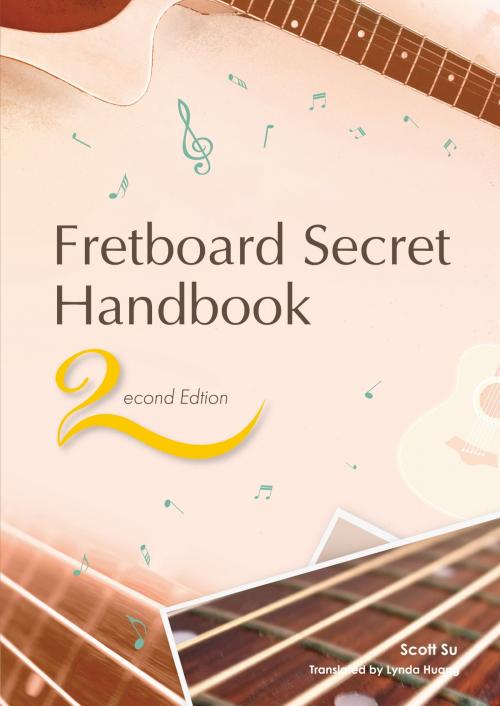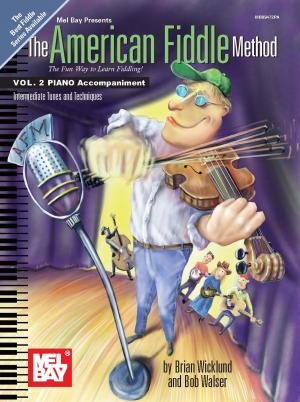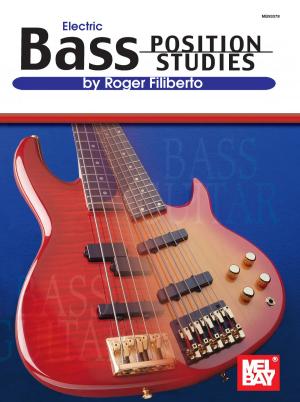Fretboard Secret Handbook (2nd Edition)
Nonfiction, Entertainment, Music, Instruments & Instruction, Techniques, Guitar, General Instruments| Author: | Scott Su | ISBN: | 1230001722697 |
| Publisher: | STC Music | Publication: | June 17, 2017 |
| Imprint: | Language: | English |
| Author: | Scott Su |
| ISBN: | 1230001722697 |
| Publisher: | STC Music |
| Publication: | June 17, 2017 |
| Imprint: | |
| Language: | English |
★ Private memory techniques help to achieve memorize scales and musical note positions on the guitar in 10 minutes
★ Combine musical intervals, chords, arpeggios, key modes and practice mantras to let you play more freely on a fretboard
★ Practical examples and licks enhance your playing techniques as well as the familiarity of scale graphics.
This handbook uses the most effective memory technique; the concept of “Image Memorization Method" (according to experiences, it can be achieved in 10 minutes) can help your brain memorize scale graphics on the fretboard in a short time and also to teach you enhancing practices and methods of application. In addition to stimulating your thinking of musical notes and fingerings on the fretboard, the most important thing is to help you be able to cleverly apply scales and chords as well as their matching via the familiarity of the fretboard.
During performances, it is the main goal of this handbook that you know the scale positions where your fingers are located at any time.
In addition, this second version handbook has more demonstrations than the first version as well as clearer and plenty of explanations. In addition to the faster and efficient memory fretboard, the rich contents lively combine various kinds of practice as well as thinking methods. And this better allows you to obtain great achievements in such as intervals, chords, arpeggios, key modes as well as musical concepts.
If you──
● Just want to play easy musical notes but you can never find the right positions,
● Want to leave playing and singing along level but you cannot find the directions,
● Want to improvise solo performances but you often get the musical notes wrong,
● Encounter a situation where your hands slide to a different fret position then you don’t know how to play,
● Have a bunch of fingerings which the more you memorize them the more you are confused,
● Want to know more about the guitar,
One book “Building Block Image Memory Methods” can fix all problems!
==TABLE OF CONTENTS==
FOREWORDS
THE FUNDAMENTALS
Chapter ONE : Building Blocks for Natural Scale
▲Distribution of Musical Note
▲Building Block Pattern
▲3 Steps to Memorization
▲Switching to Numbers of Numbered Musical Notation
Chapter TWO : Position Graphic of Octave
▲Rules
Chapter THREE : Other Relevant Scales Graphics
▲Pentatonic Scale Graphic
▲Harmonic Minor Scale Graphic
▲Melodic /Jazz Minor Scale Graphic
▲Modal Scale Graphic
Chapter FOUR : “One String Three Notes” Scale Pattern Graphic
▲Circulation Graphic of Natural Scale
▲Circulation Graphic of Harmonic Scales
▲Circulation Graphic of Melodic/Jazz Minor Scales
THE PRACTICE
Chapter FIVE : Building Blocks Moved to Fretboard
▲《Practice Method 1》Individual Practices on the Fretboard
▲《Practice Method 2》Duo Building Block Set Pattern Practice
▲《Practice Method 3》Chord-Matching Practices
▲《Practice Method 4》Playing the same melody on different fret positions
Chapter SIX : Horizontal Shift of Building Blocks
▲Horizontal Moving Practices
▲Horizontal Moving and Natural Musical Scales
Chapter SEVEN : Building Blocks which Combine Other Graphics
▲Combining “One String Three Notes” Circulation Graphic
▲Combine Octave Interval Graphic
THE APPLICATIONS
Chapter EIGHT : Uses of Interval and Double-Stop
▲Perfect Fifth & Perfect Fourth
▲Major / Minor Third
▲Major / Minor Sixth
▲Perfect Eighth
▲Major / Minor Seventh
▲Clever Uses for Each Interval
Chapter NINE : Performances of Chord and Fill-Ins
▲Inversion Chord
▲Using Inversions to Replace Original Chords
▲Chord+Fill-in Performance
Chapter TEN : Arpeggios which Add Melodic Tastes
▲Major Third Chord Arpeggios
▲Minor Third Chord Arpeggios
▲Arpeggios and Scale Building Block Graphic
Chapter ELEVEN : Trainings on Key Mode
▲Key Mode and Chords
▲Finding Notes with Differences
▲Key Modes and Chord Progression
Conclusion : How to Practice
Author
★ Private memory techniques help to achieve memorize scales and musical note positions on the guitar in 10 minutes
★ Combine musical intervals, chords, arpeggios, key modes and practice mantras to let you play more freely on a fretboard
★ Practical examples and licks enhance your playing techniques as well as the familiarity of scale graphics.
This handbook uses the most effective memory technique; the concept of “Image Memorization Method" (according to experiences, it can be achieved in 10 minutes) can help your brain memorize scale graphics on the fretboard in a short time and also to teach you enhancing practices and methods of application. In addition to stimulating your thinking of musical notes and fingerings on the fretboard, the most important thing is to help you be able to cleverly apply scales and chords as well as their matching via the familiarity of the fretboard.
During performances, it is the main goal of this handbook that you know the scale positions where your fingers are located at any time.
In addition, this second version handbook has more demonstrations than the first version as well as clearer and plenty of explanations. In addition to the faster and efficient memory fretboard, the rich contents lively combine various kinds of practice as well as thinking methods. And this better allows you to obtain great achievements in such as intervals, chords, arpeggios, key modes as well as musical concepts.
If you──
● Just want to play easy musical notes but you can never find the right positions,
● Want to leave playing and singing along level but you cannot find the directions,
● Want to improvise solo performances but you often get the musical notes wrong,
● Encounter a situation where your hands slide to a different fret position then you don’t know how to play,
● Have a bunch of fingerings which the more you memorize them the more you are confused,
● Want to know more about the guitar,
One book “Building Block Image Memory Methods” can fix all problems!
==TABLE OF CONTENTS==
FOREWORDS
THE FUNDAMENTALS
Chapter ONE : Building Blocks for Natural Scale
▲Distribution of Musical Note
▲Building Block Pattern
▲3 Steps to Memorization
▲Switching to Numbers of Numbered Musical Notation
Chapter TWO : Position Graphic of Octave
▲Rules
Chapter THREE : Other Relevant Scales Graphics
▲Pentatonic Scale Graphic
▲Harmonic Minor Scale Graphic
▲Melodic /Jazz Minor Scale Graphic
▲Modal Scale Graphic
Chapter FOUR : “One String Three Notes” Scale Pattern Graphic
▲Circulation Graphic of Natural Scale
▲Circulation Graphic of Harmonic Scales
▲Circulation Graphic of Melodic/Jazz Minor Scales
THE PRACTICE
Chapter FIVE : Building Blocks Moved to Fretboard
▲《Practice Method 1》Individual Practices on the Fretboard
▲《Practice Method 2》Duo Building Block Set Pattern Practice
▲《Practice Method 3》Chord-Matching Practices
▲《Practice Method 4》Playing the same melody on different fret positions
Chapter SIX : Horizontal Shift of Building Blocks
▲Horizontal Moving Practices
▲Horizontal Moving and Natural Musical Scales
Chapter SEVEN : Building Blocks which Combine Other Graphics
▲Combining “One String Three Notes” Circulation Graphic
▲Combine Octave Interval Graphic
THE APPLICATIONS
Chapter EIGHT : Uses of Interval and Double-Stop
▲Perfect Fifth & Perfect Fourth
▲Major / Minor Third
▲Major / Minor Sixth
▲Perfect Eighth
▲Major / Minor Seventh
▲Clever Uses for Each Interval
Chapter NINE : Performances of Chord and Fill-Ins
▲Inversion Chord
▲Using Inversions to Replace Original Chords
▲Chord+Fill-in Performance
Chapter TEN : Arpeggios which Add Melodic Tastes
▲Major Third Chord Arpeggios
▲Minor Third Chord Arpeggios
▲Arpeggios and Scale Building Block Graphic
Chapter ELEVEN : Trainings on Key Mode
▲Key Mode and Chords
▲Finding Notes with Differences
▲Key Modes and Chord Progression
Conclusion : How to Practice
Author















